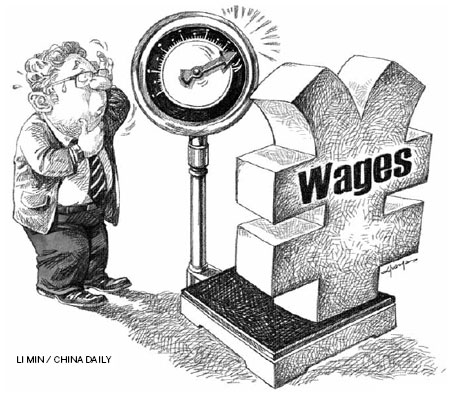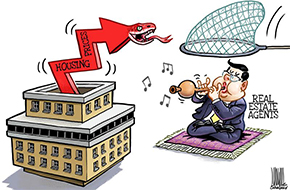Rising wages reach a milestone

China has reached its Lewis Turning Point. This is a critical milestone for a developing economy, when urban factories, restaurants and other businesses have to start raising wages faster than the inflation rate to attract rural workers. Until that point, factory wages can remain flat and still attract farm workers living on subsistence incomes at home. It will take years for China to reach the end of the turning point, when urban and rural wages are equal. Until then, the increase in real wages for unskilled workers is here to stay.
We saw further evidence of this in our recent survey of manufacturing clients in the Pearl River Delta region, the industrial powerhouse in southern China bordering Hong Kong. The annual survey, conducted after the Lunar New Year holidays, showed that manufacturing wage growth across the region is likely to accelerate to an average 9.2 percent this year, from 7.6 percent last year.
Salary increases are outpacing consumer price inflation, which we estimate will accelerate to 4 percent this year, from 2.6 percent last year. This extends a long-running trend of rising real wages, and provides further confirmation that China has arrived at the Lewis Turning Point, named after Nobel prize-winning economist Arthur Lewis.
The implications of rising wages are huge. Higher incomes help China move closer to its goal of becoming a domestic consumption-driven economy and away from its current investment-dependent structure. But they also leave companies across the PRD region with three options: move their factories inland, where labor cost is cheaper; shift plants overseas; or step up automation to save on labor cost. The majority of the companies in our survey say they plan to go for the third option, at least for now, although an increasing number are looking at the other two.
Although the rise in remuneration may be partly driven by minimum wage increases and stricter enforcement of social insurance contributions, the majority of our clients believe that growing labor shortages are the main cause. Fortunately, most companies also say that output per worker has risen faster than wages, a sign that wage growth is backed up by productivity.
Wage pressure has clearly increased over the past 12 months. Relative to last year's survey, more companies expect a more than 10 percent increase in salaries this year, while fewer companies expect no increase at all. Almost one-third of the companies surveyed said labor shortage has worsened since 2011.
Our survey results indicate that there were no material job losses during last year's downturn. They also show that demand from within both China and abroad is picking up again. More than half the companies in the survey said they expected their orders to increase over the next three months; a quarter were operating their plants at full capacity, while the majority were running at more than 80 percent capacity.





















